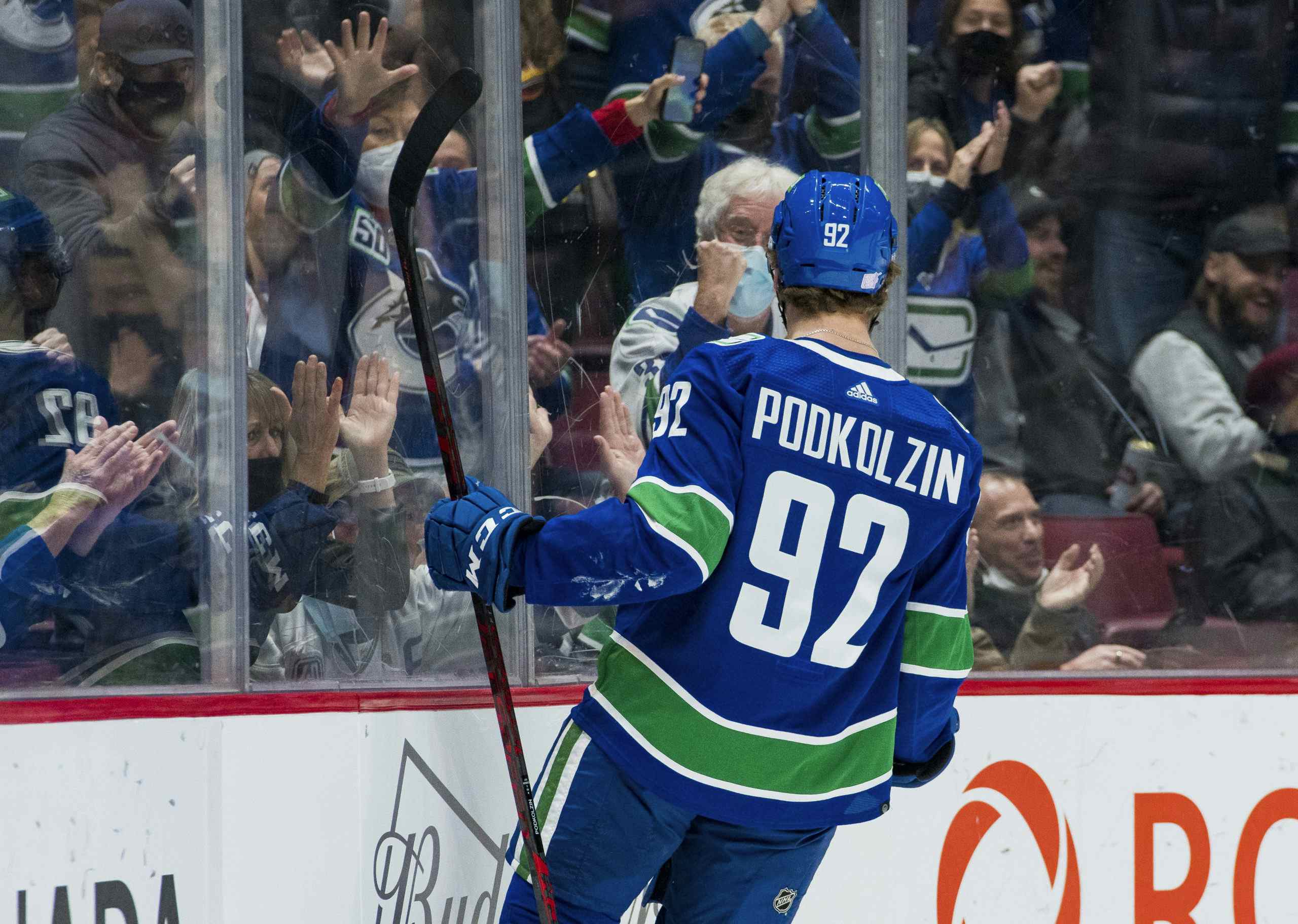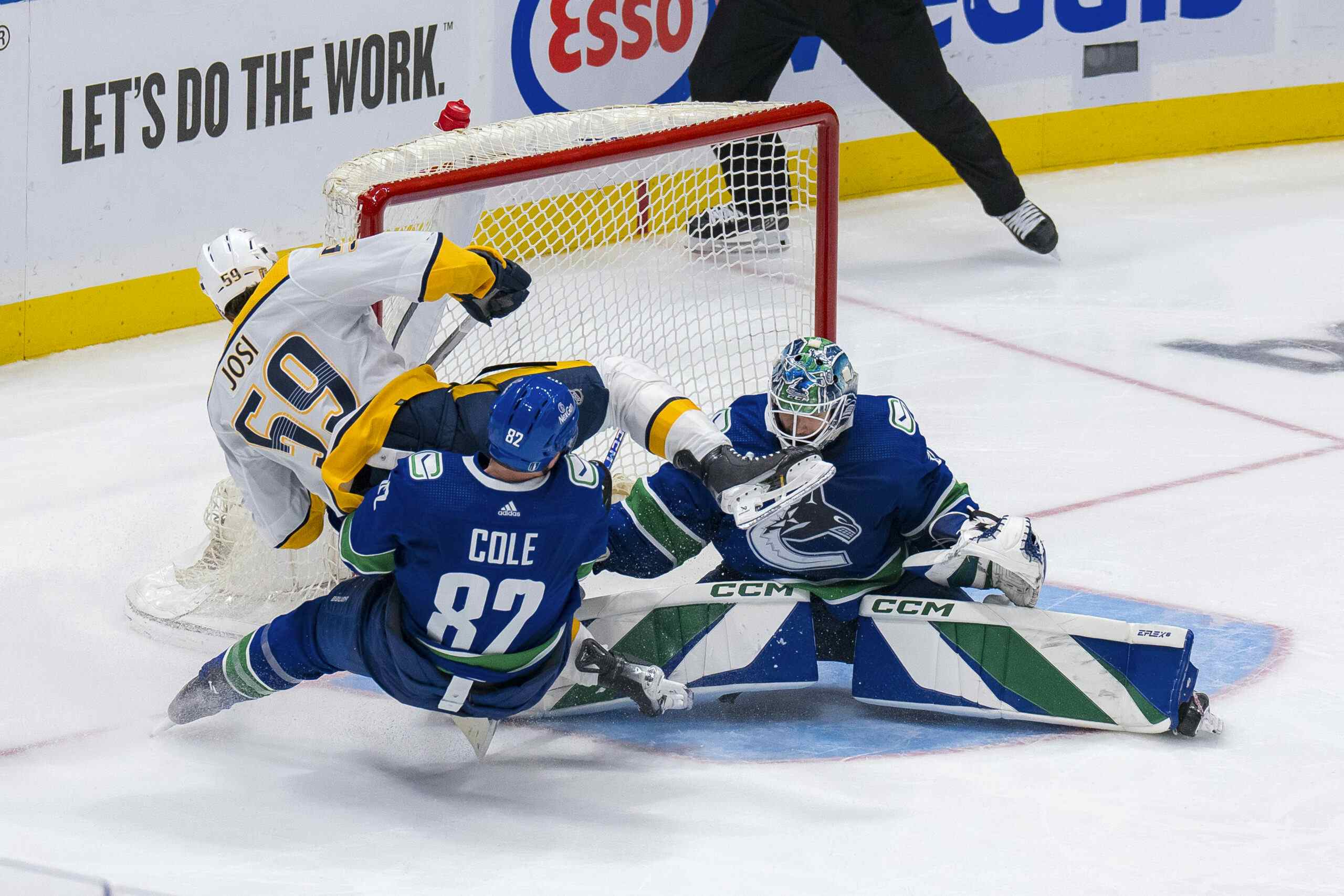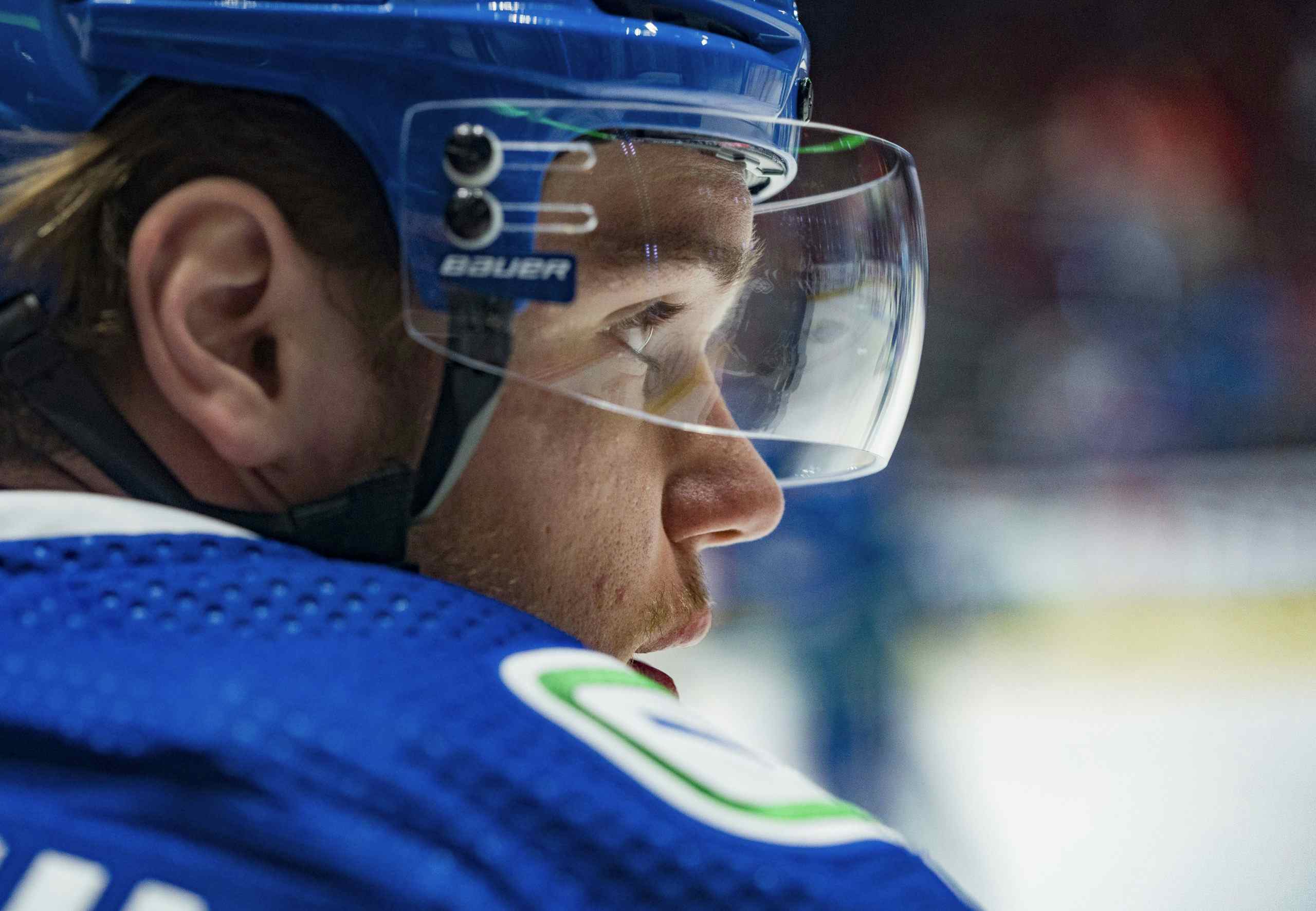The Vancouver Canucks 2017 Trade Deadline Primer
By J.D. Burke
7 years ago
If you’re every bit as fascinated with the composition of your favourite team’s roster as you are their on-ice performance, then it’s the most wonderful time of the year. We’re just nine days out from the NHL trade deadline. It’s about to get real.
Were I writing this a month ago, this is where I imagine I’d set the bar for an inactive deadline not entirely dissimilar from last year’s. What a difference a couple of weeks can make. The Canucks have moved, if ever so slightly, from their unshakeable position of unwillingness to ask players to waive no-trade protection. They seem, at the very least, open to it as a possibility; the players themselves, too.
Regardless of how much the Canucks accomplish at this year’s deadline, it’s shaping up to be every bit as compelling as last season’s. Is Vancouver a seller? Perhaps a buyer? Do they do nothing at all? Let’s dive in and see where the Canucks stand going into this most crucial period.
Areas of Need
It goes without saying that a team so porous defensively and toothless offensively as Vancouver could stand to improve in a few areas. By definition, the Canucks have many needs. What they shouldn’t do is try to fix them overnight with a quick fix deadline move. To the Canucks’ credit, it doesn’t sound like they’ve any intention of doing so either. By all accounts, buying isn’t an option.
The biggest area of need is a Sedin twin succession plan — stop me if you’ve heard that before. That’s not something Vancouver can fix overnight, but if they accrue enough draft picks, maybe they have a chance? Canucks general manager Jim Benning seems to have nailed the middle rounds of the draft, so I’d like to see him do everything possible to set himself up with a full quiver of picks.
For the Canucks, it’s not so much about what they need concerning concrete demands. It’s about how desperately they need to squeeze every last ounce of value from this lineup as they can for assets towards the future. The Canucks need, above all else, to approach this deadline as sellers. Everything else will fall into place.
The Market
The Canucks aren’t buyers at this year’s deadline. I just can’t stress that enough. Every credible source from local to national media members alike indicates as much. There’s no need to worry about them reaching into the rental market.
I don’t think that necessarily means they won’t try to make a trade in a similar vein to the ones that brought Markus Granlund and Sven Baertschi into the fold. Whether they can or not is another question entirely. Then one has to wonder if anyone is even worth the trouble.
Perhaps the Canucks have some level of interest in the Ottawa Senators forward Curtis Lazar. The once highly-touted prospect has fallen out of favour with Guy Boucher, and he’s been on the block for much of the season as a result. Then again, Lazar would require protection in the upcoming expansion draft. That, and it’s very much a legitimate question of whether he’s genuinely worth the trouble. Colour me skeptical.
Beyond that, we’ve heard the Canucks connected to a pair of young Colorado Avalanche forwards, too. Just last off-season Jason Botchford reported that the Canucks might have interest in Gabriel Landeskog, back when his availability wasn’t so well-known. Pundits have drawn the connection to Matt Duchene since.
I am, again, skeptical of whether that’s a deal worth making. The Canucks would have to spend serious capital and perhaps put another mortgage on their future to foot the bill if they opt for this route. Is that in their best interest? Maybe, but probably more so in the short than long-term.
Inventory
The Canucks have three prominent players that hold value going into the deadline. Beyond that, it’s relatively slim pickings. It could be worse — that’s more than they went into last year’s deadline holding. Let’s break it all down.
Jannik Hansen:
Contract: Expires 2017/18 at $2.5-million per season
The Canucks have to move no other player as desperately as they do Hansen. They simply cannot afford to push this past the regular season and risk a deal not materializing or taking pennies on the dollar as opposing teams take advantage of the Canucks sticky expansion situation.
For a team like the Vancouver Canucks, moving Hansen at the trade deadline is a logical move when looking at the long-term picture. They cannot afford to lose a player like Hansen, Granlund or Baertschi for nothing. Their window won’t suddenly open next year where Hansen will provide a significant boost in the last year of his deal.In regards to the expansion draft, waiting until after the season just makes it that much harder to solve a problem that is so clearly apparent.Hansen has been a great contributor to the Canucks for many years. He was a huge part of the Canucks making their run to the Stanley Cup final in 2011, but that was almost six years ago. At some point, it’s time to move on, and that time has come for the Canucks.
In that same article, Biech went on to reference deals for similarly valued players at the deadline and surmised the Canucks could secure a return that, at the very least, includes two second round picks. If the Canucks can get anything close to that, it’s a win.
Of course, Hansen has a modified no-trade clause in his contract. If the Canucks want to move Hansen, they’ll request an eight-team list of his choosing and have to work within those parameters. If Hansen hands them a list with only non-playoff teams like Radim Vrbata at last year’s deadline, then that could prove tricky.
Alexandre Burrows:
Contract: Expires 2016/17 at $4.5-million cap hit and $2.5-million in actual salary
Alex Burrows is an interesting name ahead of the deadline. This is especially so when one considers the Canucks gave serious consideration to a buyout at the end of last season. To think, he’s been an effective member of the Canucks second line; a player Benning’s considered critical to Sven Baertschi and Bo Horvat’s development.
Several teams have been connected to Burrows. The Montreal Canadiens are rumoured to have interest, along with the New York Rangers. Both teams are annual contenders, and Burrows is exactly the type of player every team could benefit from having in their lineup for that kind of hockey.
Because Burrows’ contract is back-diving, he’ll have value right across the board. Small market teams won’t be scared off by his high cap charge because the hard cash owed isn’t prohibitive by any means. That will be especially true if the Canucks show a willingness to eat salary to facilitate a deal, or perhaps, make a deal better for them.
While it doesn’t sound like Burrows has any real desire to move on from the Canucks, it sounds like he might be, at the very least, willing to work with them to find a fit elsewhere. One can only hope the Canucks take Burrows up on that offer at some point.
Ryan Miller:
Contract: Expires 2016/17 at $6-million per season
If the Canucks can find a way to deal Ryan Miller at this year’s deadline, it will be an absolute masterpiece. Not because Miller is terrible. Not by any means. He’s playing like a high-end starter, and one could reasonably argue he’s the only reason the Canucks are even remotely close to playoff contention. It’s just he’s 36-years-old, has limited no-trade protection and costs $6-million.
I wonder if the league sees Miller as someone who can lead the charge in the playoffs as a workhorse or just as a high-end backup — in a similar way to how they viewed James Reimer at last year’s deadline. That will play a role in determining his interest and what kind of return the Canucks can expect. Frankly, I think they’re looking at a Reimer type of return, in the mid-to-late round pick range.
Complicating matters will be Miller’s no-trade protection. Miller can submit a list of five teams he’d be willing to waive his no-trade clause to join. Given Miller’s desire to remain on the West Coast so as to keep close to his wife Noureen DeWulf, that list could be comprised entirely of Californian teams. How many of those teams need a goaltender? Much less a $6-million goaltender with durability concerns that most likely envision as a 1B.
Moving Miller will prove difficult. Perhaps the Ducks could see Miller as a useful plan B. They acquired Jonathan Bernier last season, but he’s struggled to date to find his game in Anaheim. Bernier’s currently sporting a .908 at even strength. If the Canucks are serious about moving Miller, I’d call the Ducks post-haste.
Luca Sbisa:
Contract: Expires 2017/18 at $3.6-million per season
I didn’t think there would be much of a market for Luca Sbisa at this year’s deadline, but in a world where Michael Stone can land a third-round pick, anything is possible. If the Canucks are serious about moving Sbisa at this year’s deadline (and we’ve heard nothing to indicate that’s the case), then there could be a market for him after all.
That would represent a stark departure from last off-season, when reports abound of the Canucks desire to get out from under Sbisa’s contract and the non-existent market for his services. Then again, Sbisa’s had his first none-terrible season as a Canuck. I’m not saying he’s necessarily been good. He played well enough until about late-November. Other than that, though, he’s looked like a passable third pair defenceman at the best of times. There’s value for those at this time of year, though.
How much remains to be seen. Whichever team commits to Sbisa will have to consider ramifications beyond this season and how they impact the complexion of their roster. Sbisa is signed for next season and would require protection from the expansion draft.
If the Canucks can get anything for Sbisa, that’s a small victory for Benning and co. Don’t get too excited about the return. Think a fifth-round pick.
Jordan Subban:
Contract: Expires 2017/18 at $755,000 NHL cap hit (RFA)
If the Canucks can pull off a move similar to their Markus Granlund acquisition last season, Jordan Subban is the ammunition to accomplish as much. It doesn’t seem like the Canucks are terribly keen on Subban. Don’t get the sense the current regime ever was, though.
To be fair, there are significant defensive warts to Subban’s game. The concerns on Pat Quinn Way aren’t unfounded. This isn’t just a Benning-thing, either. Comets head coach Travis Green has healthy scratched Subban three times this season and moved him off the first unit power play.
I just wonder how much value Subban actually has. Everyone sees the warts apparent in his game. Even his biggest fans and you can probably count me among them. He’s an intriguing prospect to be sure, and I tend to think he has the tools to make the NHL. Whether a team thinks they can unlock that potential is the big question here.
Honourable Mentions: Erik Gudbranson, Jake Virtanen, Alexander Edler, Jack Skille, Michael Chaput, Philip Larsen, Alex Biega and Jacob Markstrom
Logistics
According to www.CapFriendly.com, the Canucks have $1.75-million cap space. If you account for Long Term Injured Reserve, that number grows to $4.35-million. The Canucks only have 46 of their 50 salaried player contract slots used — perhaps we’d be better served assuming they’re only willing to use two of those, given the possibility of Adam Gaudette or Brock Boeser signing an Entry-Level Contract at season’s end.
The Canucks currently hold five draft picks going into this year’s draft, which is a low mark for a team of Vancouver’s quality. They dealt their fifth-round selection to the Edmonton Oilers for Philip Larsen (can become a fourth-round pick if Larsen finishes the season at a .3 point per game pace with a minimum of 42 games) and their sixth-round pick as a part of the deal that landed them Emerson Etem last season.
That number might be artificially low, though. There’s still the deadline to consider. Also, the Canucks could be in line to receive the Columbus Blue Jackets second-round pick as compensation for John Tortorella.
Vancouver enters this off-season with $55.1-million committed to 27 standard player contracts. They have to re-sign Bo Horvat, Erik Gudbranson and Nikita Tryamkin, which says nothing of the Miller-size hole in net that they’ll have to fill and odds and ends of their roster elsewhere. Unfortunately, I don’t think the Canucks can take on much in the way of bad contracts at this year’s deadline.
Conclusion
The Canucks can’t suffer a repeat of last year’s deadline (or even the one before, truthfully). At some point, Benning needs to bite the bullet and begin the rebuild in earnest. That means securing futures whenever possible and cutting ties with ageing veterans to do so.
While Burrows and Hansen may not want to move, they seem, at the very least, open to the idea. That should be enough to move the Canucks to action. It’s not like they’ve set a strong precedent with no-trade clauses before. They moved Kevin Bieksa and Jason Garrison when they had one. Make no mistake about it; they asked Dan Hamhuis to waive, too.
The focus needs to shift to three or four years from now. The way Benning’s drafted with the Canucks, the deadline can have a profound impact on their ability to get out of this organizational downswing faster and better than how they currently project.
Recent articles from J.D. Burke





